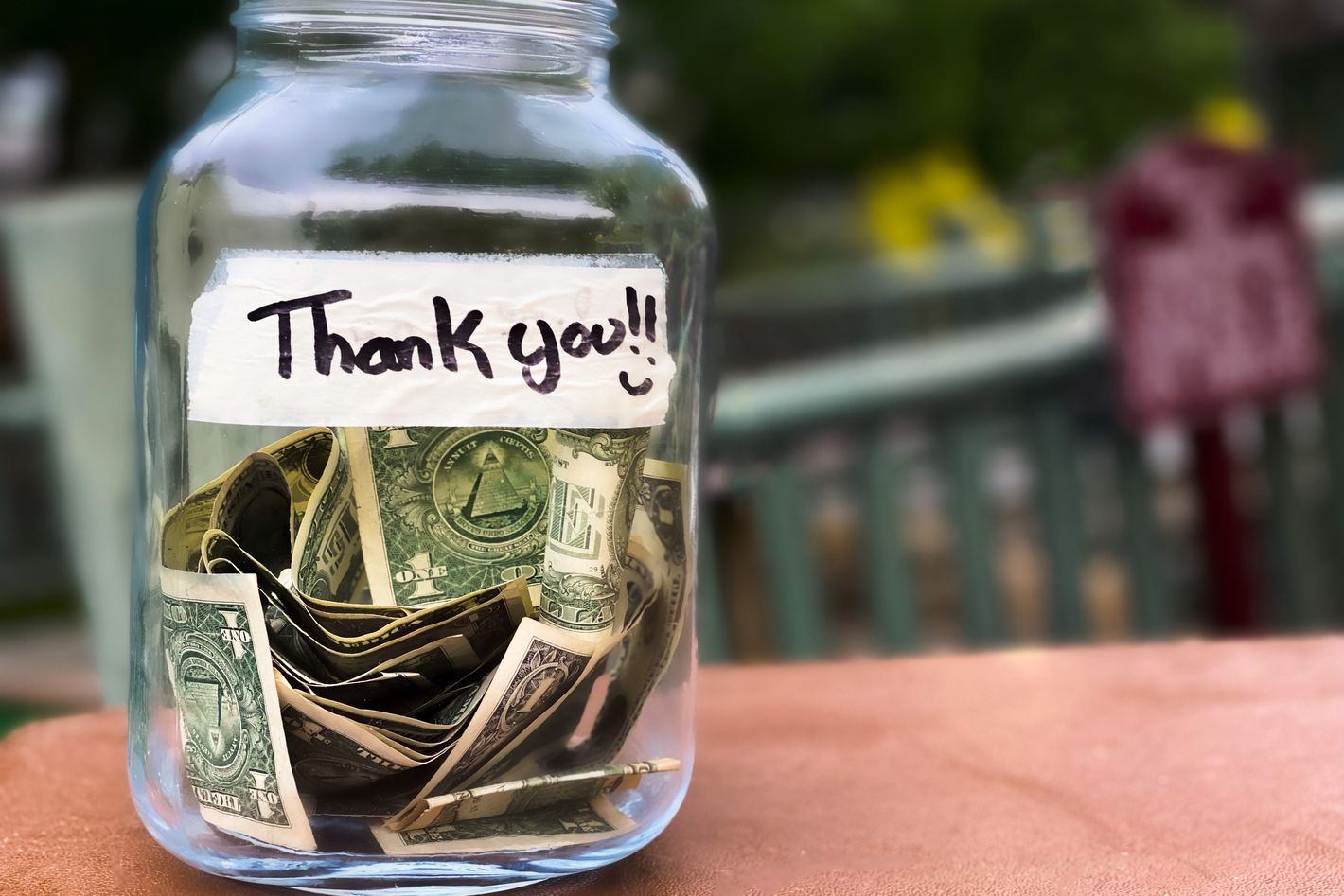when you want, where you want.
Bring Back the Coffee Shop Tip Jar
 Photo: Catherine McQueen/Getty Images
Photo: Catherine McQueen/Getty Images
The other day, the company Square shared some interesting data with me: For the first time since 2015 (as far back as this data went), the average amount that customers tip at any of Square’s payment terminals and kiosks — and if you’ve bought anything in the past ten years, you know these terminals are everywhere — has dropped below 15 percent. That includes full-service restaurants, where the average tip is down to 14.65 percent; and cafés, where customers tip an average of 14.56 percent. (The overall average across all sectors is 14.99 percent.) “I think we all saw a tipping bump in the pandemic,” a cheery, helpful rep for the company told me over the phone. “Now it’s the lowest it’s been.”
There are many theories as to why tipping is down: tip fatigue; economic worries; the inflated price of goods, which makes a $1 tip “less” than it once was. But I thought about a recent experience at a nice coffee shop where I picked a $25 bag of beans off a shelf and ordered a $6 iced coffee. I was prompted, by default, to leave a tip of at least 20 percent on the purchase: That’s a $6.20 tip for a $6 coffee. Leaving a $1.50 tip required about four separate taps (“other amount,” “custom,” etc.). It was, more than anything, just sort of annoying.
To be clear: I don’t mean the concept of tipping is annoying. Gratuities are fundamentally necessary, and I try to tip generously: 25 percent or more at restaurants, $1 per item I order at a counter-service café or bakery. What I mean is that the literal act of trying to leave a tip on a small purchase has become annoying.
The screen systems at counter-service places always offer three options for a tip, either set dollar amounts or various percentages of the purchase. As a customer, you never quite know what you’re going to get. The fourth option offered is no tip at all. Most people — or at least most of the people I’ve noticed while I’m standing in line to buy too-expensive coffee beans — simply walk away from the screen at this point. This, just like tapping the no-tip option, is an active choice to leave nothing extra whatsoever. And this, it occurred to me recently, is the opposite of the experience offered by the classic tip jar, where the only active choice is leaving a tip. (Opting out of tip-jar culture is, at most, a passive choice.) What feels better: Deciding to throw an extra dollar or two into the jar for workers who depend on the money to pay bills, or walking away and pretending you didn’t see the trio of tipping prompts on a screen?
The tip jar was a good system — until everyone stopped carrying cash. Here is my version of a modest proposal: Change the screens. Offer one option at the end of a transaction: “Add a tip?” Yes, I’ll think as I tap. “How much?” I’ll enter in the right amount and walk off happy.
Is there any material difference between this and the current system? Not really. Is it definitely guaranteed to raise tips for workers? We’ll never know if we don’t try. But reminding us all that tipping can feel like an act of generosity instead of an obligation to be either shouldered or ignored probably can’t hurt, either.
More Eating New York
All Rights Reserved. Copyright , Central Coast Communications, Inc.